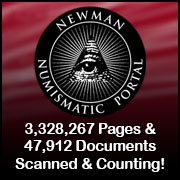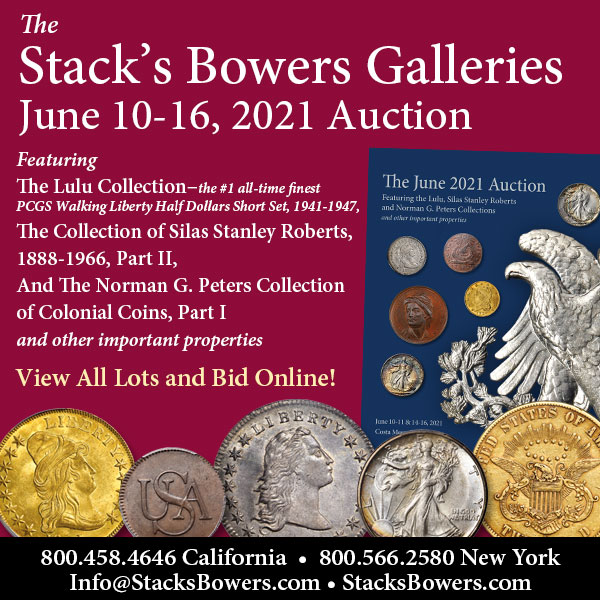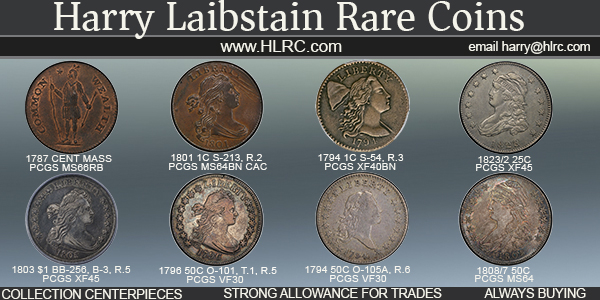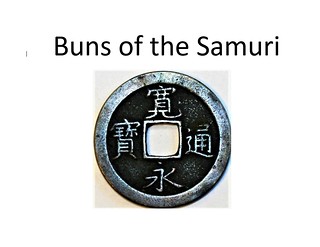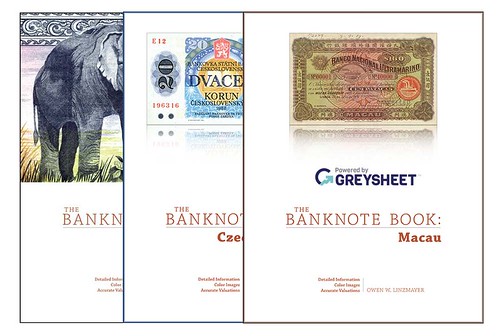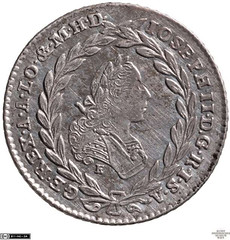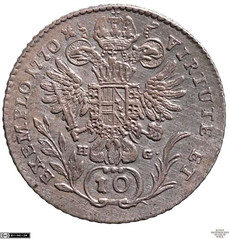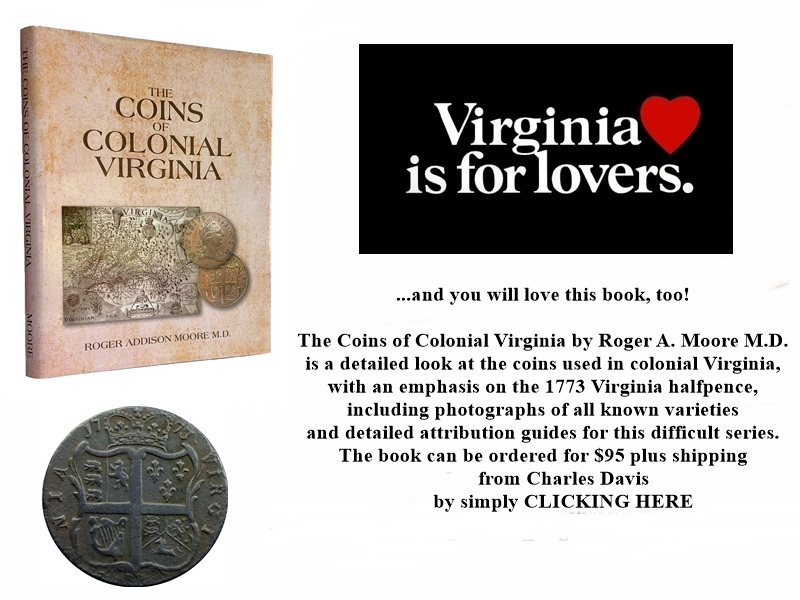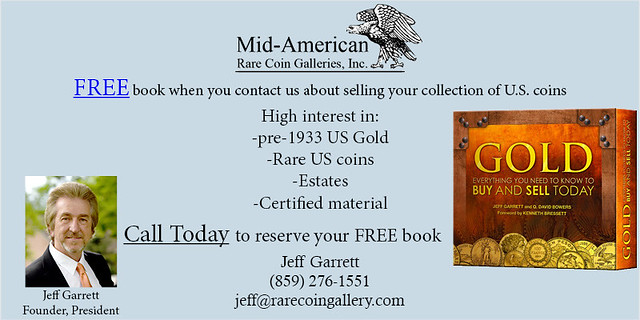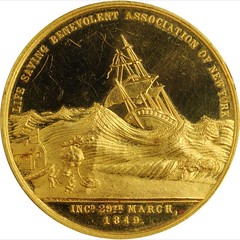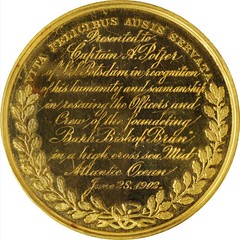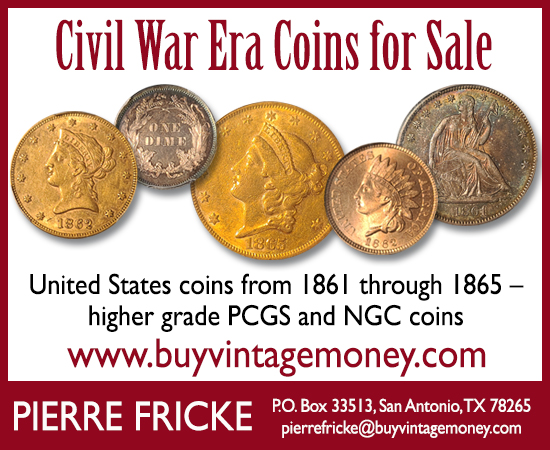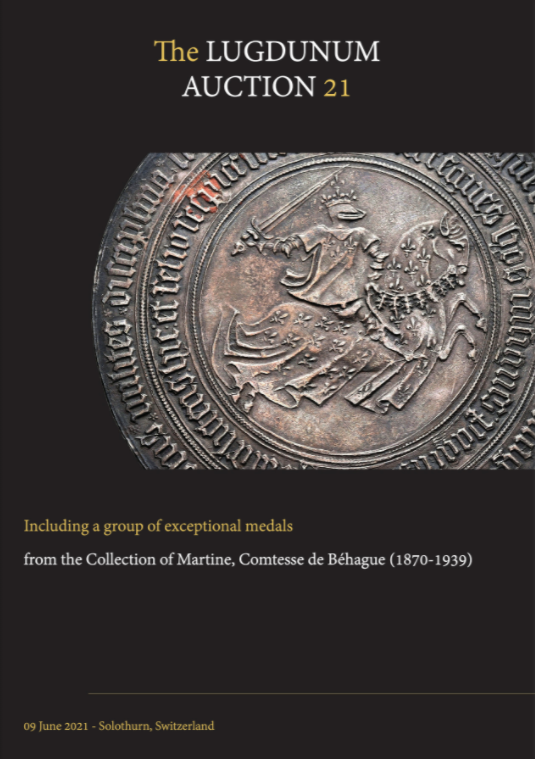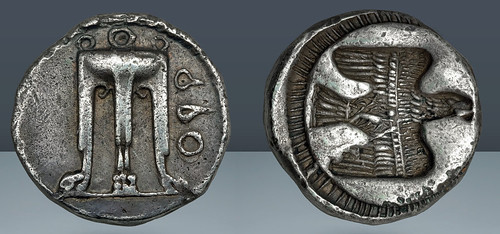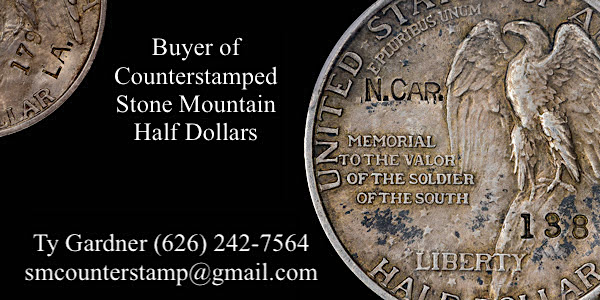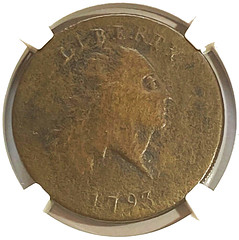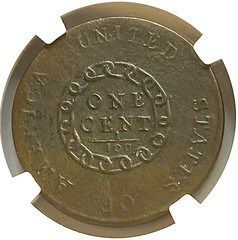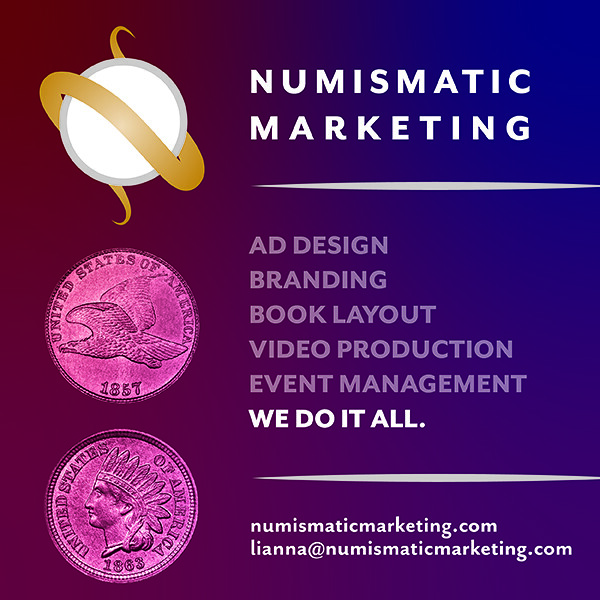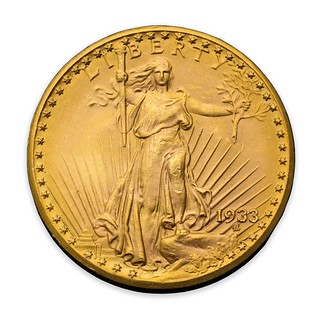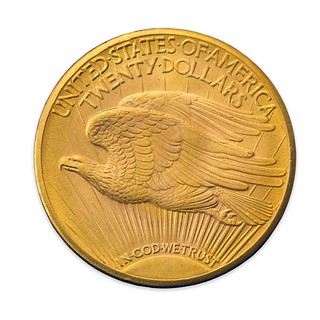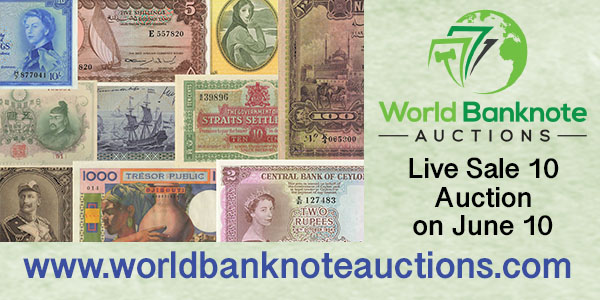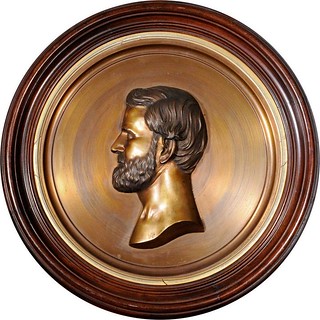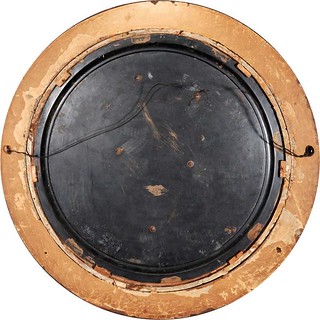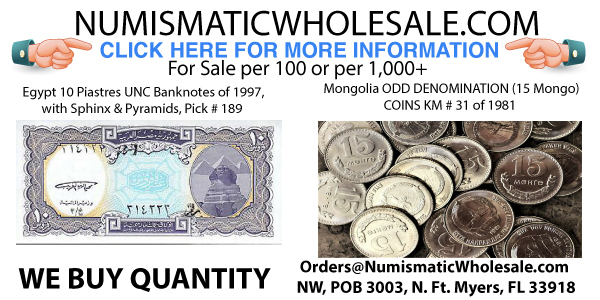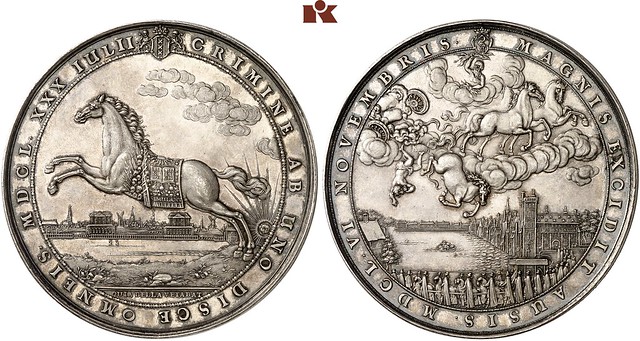
Visit our NBS Sponsors


|
About Us
The Numismatic Bibliomania Society is a non-profit association devoted to the study and enjoyment of numismatic literature. For more information please see our web site at coinbooks.org SubscriptionsThose wishing to become new E-Sylum subscribers (or wishing to Unsubscribe) can go to the following web page link MembershipThere is a membership application available on the web site Membership Application To join, print the application and return it with your check to the address printed on the application. Print/Digital membership is $40 to addresses in the U.S., and $60 elsewhere. A digital-only membership is available for $25. For those without web access, write to: Charles Heck, Treasurer AsylumFor Asylum mailing address changes and other membership questions, contact Chuck at this email address: treasurer@coinbooks.org SubmissionsTo submit items for publication in The E-Sylum, write to the Editor at this address: whomren@gmail.com BUY THE BOOK BEFORE THE COINSale Calendar
|
- WAYNE'S WORDS: THE E-SYLUM MAY 30, 2021
- NEW BOOK: 2021 VARIETIES OF U.S. LARGE CENTS
- NEW MONOGRAPH: BUNS OF THE SAMURI
- CDN PUBLISHING ACQUIRES THE BANKNOTE BOOK
- NUMISMATIC BOOK PUBLISHING IN 2020
- DANIEL ALLEN FREELAND (1949-2021)
- NNP LAUNCHES NUMISMATIC NOTABLES
- VIDEO: A THOUSAND OUNCE BAR OF SILVER
- NOTES FROM E-SYLUM READERS: MAY 30, 2021
- DOLLAR BILLS AS MESSENGERS
- VOCABULARY TERM: EDGE LETTERING, PART 3
- MORE ON DAVID ULYSSES PROSKEY (1853-1928)
- STACKS BOWERS JUNE 2021 SALE SELECTIONS
- LUGDUNUM AUCTION 21 HIGHLIGHTS
- NUMISMATIC NUGGETS: MAY 30, 2021
- ANCIENT AMULET: SOLOMON'S SEAL
- WAYNE'S NUMISMATIC DIARY MAY 30, 2021
- A MEMORABLE CHAIN CENT PURCHASE
- THE U.S. MINT AND THE MANHATTAN PROJECT
- THE FAROUK 1933 DOUBLE EAGLE, PART 2
- THE AUCTION OF A PURPLE HEART
- THE NATIONAL BRONZE PICTURE GALLERY
- THE CASHIER WHO TOOK GEORGE FLOYD'S $20 BILL
- WALL STREET'S CRYPTO ARTIST
- STABLECOINS AND THE WILD WEST OF FINANCE
- CAN I PAY THE TAXMAN IN COMMEMORATIVE COINS?
- CIRCULATING AND NON-CIRCULATING LEGAL TENDER
- LOOSE CHANGE: MAY 30, 2021
Click here to read the thin version on the web
Click here to subscribe
Click here to access the complete archive
To comment or submit articles, reply to whomren@gmail.com
Content presented in The E-Sylum is not necessarily researched or independently fact-checked, and views expressed do not necessarily represent those of the Numismatic Bibliomania Society.
WAYNE'S WORDS: THE E-SYLUM MAY 30, 2021
 New subscribers this week include:
Norm Cochrane,
Bob Grellman, and
Allen Ross.
Welcome aboard! We now have 6,636 subscribers.
New subscribers this week include:
Norm Cochrane,
Bob Grellman, and
Allen Ross.
Welcome aboard! We now have 6,636 subscribers.
Thank you for reading The E-Sylum. If you enjoy it, please send me the email addresses of friends you think may enjoy it as well and I'll send them a subscription. Contact me at whomren@gmail.com anytime regarding your subscription, or questions, comments or suggestions about our content.
This week we open with two new books, the acquisition of The Banknote Book, numismatic publishing in 2020, updates from the Newman Numismatic Portal, and more.
Other topics this week include edge lettering, auction highlights, Solomon's Seal, a chain cent, the 1933 double eagle, the auction of a Purple Heart, the National Bronze Picture Gallery, the cashier who took George Floyd's $20 bill, Wall Street's crypto artist, the Wild West of finance, and paying the taxman in commemorative coins.
To learn more about Dan Freeland, John Adams, Max Schmeling, David Proskey, the thousand ounce bar of silver, testoons, Coin University, Bar Coppers, the CIA Honorable Service Medal, Martine, Comtesse de Béhague, Matthew Stickney's North West Co. token, buns of the Samuri, Bitchcoin, the modern version of mobile chests of silver, and Edward Rausch's Numismatic Urn, read on. Have a great week, everyone!
Wayne Homren
Editor, The E-Sylum
NEW BOOK: 2021 VARIETIES OF U.S. LARGE CENTS
A new edition of Bob Grellman's book on late date Large Cent die varieties has been published. Here's the announcement. -Editor
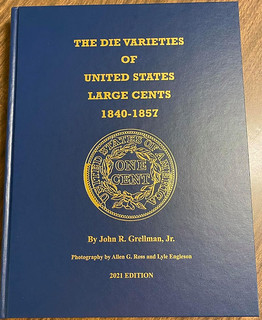 A new 2021 edition of The Die Varieties of United States Large Cents 1840-1857 by John R. (Bob) Grellman, Jr., is available for immediate delivery. The new book updates the 2000 edition that sold out many years ago. Hardbound, 451 pages with color photos of rarities and special die states, updated rarity and census information, and dozens of newly discovered rare die states are described in detail.
A new 2021 edition of The Die Varieties of United States Large Cents 1840-1857 by John R. (Bob) Grellman, Jr., is available for immediate delivery. The new book updates the 2000 edition that sold out many years ago. Hardbound, 451 pages with color photos of rarities and special die states, updated rarity and census information, and dozens of newly discovered rare die states are described in detail.
Books are available for $125 delivered via USPS Priority Mail. Contact Allen Ross at latedatebook@gmail.com or send orders to Allen Ross, 1451 Edinger Ave, Suite B, Tustin, CA 92780.
NEW MONOGRAPH: BUNS OF THE SAMURI
Ted Puls has published a new monograph on varieties of The Japanese mint mark Bun
.
-Editor
"This is a short pamphlet about varieties of The Japanese mint mark Bun
used from 1668-1683. I haven't seen most of these in any Western reference so I thought to write them up and photograph them for anyone that might want to collect such things. Email me for a free download of the 20 varieties that I was able to find and my short history of the coin."
CDN PUBLISHING ACQUIRES THE BANKNOTE BOOK
CDN Publishing has acquired The Banknote Book from publisher Owen Linzmayer. Here's the press release. -Editor
CDN Publishing Acquires The Banknote Book from Owen Linzmayer
In a major industry announcement, CDN Publishing has agreed to acquire the collection of world paper money catalogs edited by Owen Linzmayer, and published under the name of The Banknote Book (BNB). The Banknote Book consists of nearly 300 different chapters of world bank notes, based on the issuing country. Linzmayer has been working on the BNB project for more than a decade and has published an impressive 7,400 pages of reference material covering more than 71,000 different bank note types and varieties.
NUMISMATIC BOOK PUBLISHING IN 2020
Dennis Tucker, publisher at Whitman Publishing, penned a nice blog article for CoinUpdate about the state of the hobby book market in 2020. -Editor
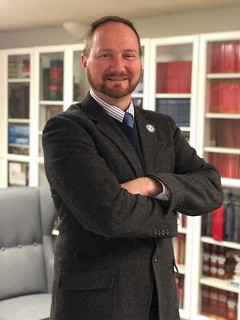 In 2020 things looked dicey for book publishing. Starting that March, when libraries and brick-and-mortar businesses were shutting down because of COVID-19, American bookstores experienced 12 consecutive months of falling sales. This is finally turning around—and with gusto. Today the world of books is bustling.
In 2020 things looked dicey for book publishing. Starting that March, when libraries and brick-and-mortar businesses were shutting down because of COVID-19, American bookstores experienced 12 consecutive months of falling sales. This is finally turning around—and with gusto. Today the world of books is bustling.
The U.S. Census Bureau estimates that bookstore sales increased 35 percent in March 2021, benchmarked against March 2020. Publishers Weekly reported that unit sales of print books rose 25 percent in the week ending May 8, compared to the same week in 2020. Adult nonfiction—which is the category most numismatic books occupy—jumped 25.1 percent compared to one year ago.
In our cozy corner of the publishing world, nestled within antiques and collectibles, sales are strong. We've seen a surge in numismatic purchasing this year. We had to crank the presses back up when several new books quickly sold out of their initial print runs in the first quarter. These included specialized as well as beginner books, and new titles as well as updated/revised editions of popular older books. Here are a few of the strong sellers:
DANIEL ALLEN FREELAND (1949-2021)
Pete Smith submitted this remembrance of Dan Freeland. Thank you. -Editor
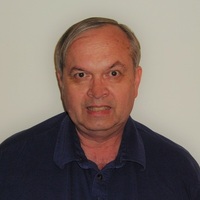 I was shocked to see the death notice for Dan Freeland in the June issue of The Numismatist. I see that he died on April 17. I had talked with him on the phone less than a month earlier. His obit mentions that he was a teacher for thirty years but fails to mention that he graduated from Central Michigan University.
I was shocked to see the death notice for Dan Freeland in the June issue of The Numismatist. I see that he died on April 17. I had talked with him on the phone less than a month earlier. His obit mentions that he was a teacher for thirty years but fails to mention that he graduated from Central Michigan University.
On March 20, I got an email message from Kathy Freeland. She said that she and Dan had watched my presentation for the Newman Numismatic Portal Symposium. She asked for my phone number so Dan could call me. He called and we talked about phone cards and other topics.
NNP LAUNCHES NUMISMATIC NOTABLES
The Newman Numismatic Portal has launched a new video interview series. Project Coordinator Len Augsburger provided the following report. -Editor
Newman Portal Launches Numismatic Notables
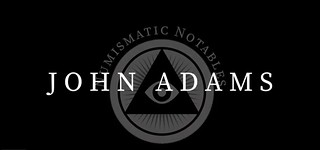 Newman Portal announces a new video series, Numismatic Notables, produced by Lianna Spurrier, which will feature interviews with important personalities in the field of numismatics. Our first interviewee, John Adams, was interviewed by Len Augsburger and Joel Orosz on February 19, 2021, and brings a lifetime of collecting experiences beginning with David Bullowa, the Philadelphia dealer, and continuing to the present day. Along the way Adams has written a number of now-standard works including United States Numismatic Literature (vols. I-II), Comitia Americana and Related Medals, and Medallic Portraits of Admiral Vernon.
Newman Portal announces a new video series, Numismatic Notables, produced by Lianna Spurrier, which will feature interviews with important personalities in the field of numismatics. Our first interviewee, John Adams, was interviewed by Len Augsburger and Joel Orosz on February 19, 2021, and brings a lifetime of collecting experiences beginning with David Bullowa, the Philadelphia dealer, and continuing to the present day. Along the way Adams has written a number of now-standard works including United States Numismatic Literature (vols. I-II), Comitia Americana and Related Medals, and Medallic Portraits of Admiral Vernon.
Adams reflects on numismatic characters of all stripes, including John Ford, Doug Smith, William Sheldon, and others. Adams was the only person to ever confront Sheldon on the matter of the large cents stolen from the American Numismatic Society, a conversation recounted by Adams in this interview. Adams has played a leadership role in many numismatic organizations and opines on the role of institutions within numismatics, including the American Numismatic Society and Massachusetts Historical Society. Adams is further active in the Medal Collectors of America and the Numismatic Bibliomania Society, and offers thoughts on the importance of social engagement within the collector community.
Link to Numismatic Notables: John Adams on Newman Portal:
https://nnp.wustl.edu/library/book/599709
VIDEO: A THOUSAND OUNCE BAR OF SILVER
These are selections from the David Lisot Video Library that feature news and personalities from the world of coin collecting. David has been attending coin conventions since 1972 and began videotaping in 1985. The Newman Numismatic Portal now lists all David's videos on their website at:
https://nnp.wustl.edu/library/multimediadetail/522852
Last week's video covered the world's largest silver coin; here's one on a thousand ounce bar of silver. -Editor
Have You Ever Seen a 1000 Oz Bar of Silver?
VIDEO: 2:45.
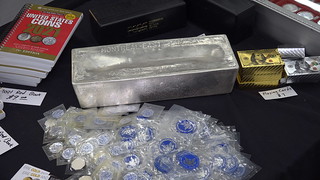 Ashley Sandoval, Erie Gold & Silver,
Ashley Sandoval, Erie Gold & Silver,
David Lisot, Interviewer, CoinTelevision.com. May 7, 2021.
Imagine a thousand ounce bar of silver! Imagine trying to lift it with one hand! Collectors at the Denver Coin Expo had that challenge to lift a silver bar weighing almost 80 pounds and valued more then $28,000. Going to a coin show is one of the best ways to see amazing numismatic items.
NOTES FROM E-SYLUM READERS: MAY 30, 2021
Using IKMKRegarding IKMK, the new database of coins in German and Austrian public collections, Max Hensley writes:
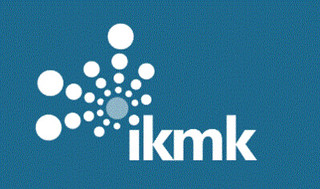 "I tried the newly-launched IKMK museum coins website. I entered
"I tried the newly-launched IKMK museum coins website. I entered Siebenburgen 20 Kreuzer
(Transylvania), which was obscure enough to be a good test and relevant to likely Austrian holdings. The return was a single coin, a very rare 10 Kreuzer. So the website has some degree of flexibility in that it substituted another denomination. Oddly it did not return any of the "common" (relatively) coins of this principality. One doesn't know whether these are missing from the museum holdings or the search engine was lacking.
The site was easy to use and the image (obverse and reverse) of the 10 kreuzer was very good. It was a real treat. In 55 years of collecting this material I had never seen another. I still collect some European coins. It's been a bit fruitless the last decade or so as nobody offers anything I've not already seen - and when they do, it's 4 figures. I've migrated over to scripophily, which is a far better deal from the point of view of rarity and prices (which are laughably low considering populations).
IKMK is quite a contrast to the Smithsonian effort. I hope they consider the IKMK site to be something to shoot for."
The site was slow to load the coin's page for me, but the link below will take you to it. It's nicely done. Above are lower-resolution versions of the coin images. -Editor
To visit the IKMK site, see:
https://ikmk.net/
Haus Österreich: Joseph II.
1770
(https://www.ikmk.at/object?id=ID357503)
To read the earlier E-Sylum article, see:
IKMK: CATALOG OF GERMAN AND AUSTRIAN COINS
(https://www.coinbooks.org/v24/esylum_v24n21a12.html)
Other topics this week include the Washington silver restrike token, Shillings and Testoons, Coin University, and Edward Rausch's Numismatic Urn. -Editor
DOLLAR BILLS AS MESSENGERS
Jeff Kelley of Massachusetts submitted these thoughts on banknotes autographed by notable people. -Editor
I was very interested to read the latest article on banknotes that have political or other messages written or stamped on them.
I was reminded of my own efforts some years ago to use currency to promote an awareness of certain historical achievements or events.
I decided that one way to guarantee at least some level of curiosity among recipients of the dollar bills was to have them autographed by notable people whose activities I felt were worthy of further study, especially by students.
VOCABULARY TERM: EDGE LETTERING, PART 3
Here's more from the entry on Edge Lettering and Numbering from Dick Johnson's Encyclopedia of Coin and Medal Terminology. -Editor
Data Found On Edges
Hallmarks. Hallmarking developed to a high degree among English gold and silversmiths, beginning as early as the 13th century. Four marks usually appeared on English silver and gold: a maker's mark, the hallmark of the assay office, a date letter and a sterling mark. All precious metal objects were required by law to be so hallmarked (with certain exceptions such as foreign-made plate or antique objects over 100 years old). Usually these appear on the reverse, but infrequently on the obverse – or the edge. See hallmarks and hallmarking.
MORE ON DAVID ULYSSES PROSKEY (1853-1928)
Here's the final section from the David Proskey entry from the online draft of John Lupia's book of numismatic biographies. Thanks! This is an excerpt with the full article and bibliography available online. -Editor
 In 1900, he is listed in the U. S. Census as a coin dealer still living at 448 River Street, Paterson, Passaic County, New Jersey, with his wife, three sons and daughter.
In 1900, he is listed in the U. S. Census as a coin dealer still living at 448 River Street, Paterson, Passaic County, New Jersey, with his wife, three sons and daughter.
At the Collector's Club, 351 Fourth Avenue, New York City, New York. The first public numismatic exhibition held at the Collector's Club took place on Saturday, January 25th 1902. This exhibit was comprised of collections of five exhibitors : John G. Mills, David U. Proskey, Charles Gregory, Albert R. Frey, and H. G. Mandel. Proskey won first place in the exhibit and Gregory took second place.
Harlan Page Smith died on Sunday, March 2, 1902, just sixteen days short of his sixty-third birthday and ninety-five days after the dissolution of his partnership with David Proskey in New York Coin and Stamp Company.
STACKS BOWERS JUNE 2021 SALE SELECTIONS
Here are some lots that caught my eye in the upcoming June 2021 Stack's Bowers sale. See also the article elsewhere in this issue about the National Bronze Picture Gallery medals. -Editor
Lot 1069: 1902 Life Saving Benevolent Association of New York Medal
1902 Life Saving Benevolent Association of New York Medal. By George Hampden Lovett. Gold. Prooflike Mint State.
51.1 mm. 802.7 grains, fineness unknown. Obv: Sailing ship foundering in storm, House of Refuge on shore dispatches rescuers in life boat while others fire a lifeline from a Lyle Gun on the beach. Rev: Oak wreath at border, inscription VITA FELICIBUS AUSIS SERVATA above, center inscribed to the recipient PRESENTED TO / CAPTAIN A. POTJER / OF S.S. POTSDAM IN RECOGNITION / OF HIS HUMANITY AND SEAMANSHIP / IN RESCUING THE OFFICERS AND / CREW OF THE FOUNDERING / BARK "BISHOP BRUN" / IN A HIGH CROSS SEA. MID- / ATLANTIC OCEAN / JUNE 25, 1902. Deeply mirrored in the fields, this beautiful bright medium golden specimen exhibits only the typical light handling marks for an awarded example. While we have handled a few gold medals of this type in recent years, they are clearly far rarer than their silver and bronze counterparts.
LUGDUNUM AUCTION 21 HIGHLIGHTS
Dr Jonas Emmanuel Flueck of Lugdunum GmbH in Switzerland passed along information about his firm's upcoming auction. Thanks. Here's text from the catalogue's Foreword. As noted in the earlier article, there are some magnificent medals in this sale. -Editor
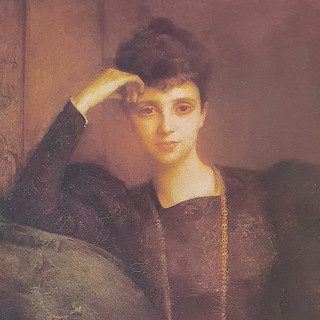 It is a great honor and a great pleasure for us to have the opportunity to offer in this auction a group of exceptional medals from the Collection of Martine, Comtesse de Béhague (1870-1939), one of the most important French art collectors, numismatists and benefactors of the early 20th Century.
It is a great honor and a great pleasure for us to have the opportunity to offer in this auction a group of exceptional medals from the Collection of Martine, Comtesse de Béhague (1870-1939), one of the most important French art collectors, numismatists and benefactors of the early 20th Century.
For any connoisseur, numismatist or art collector, artefacts with a provenance from her famous collection are of the greatest desire. The Comtesse did only collect the best pieces of Art available at her time and that is the reason why this provenance is considered as a guaranty of great artistic merit, rarity and good taste.
This group of medals is made of six specimens, that we would like to introduce in a few words:
NUMISMATIC NUGGETS: MAY 30, 2021
Here's a selection of interesting or unusual items I came across in the marketplace this week. Tell us what you think of some of these. -Editor
Croton was founded by Achaean Greeks in c. 710 BC. It was situated between Tarentum and Rhegium making it a good port city between the two. Some notable Greeks found prominence in Croton. The first was Milo of Croton, who was victorious in the Olympic Games c. 588 BC. The philosopher Phythagorus formed a society of over 300 disciples.
This lovely coin comes from the Niggeler Collection (sold in 1965) through a joint venture of Bank Leu and M&M Basel and previously was part of the Jameson Collection.
Shanna Schmidt's Coin of the Week has an unusual plain design - a tripod with the feet of a griffin. -Editor
To read the complete item description, see:
Bruttium, Croton. c. 500-480 BC
(https://www.shannaschmidt.com/greek-coins/bruttium-croton-c-500-480-bc?rq=gk1522)
Other topics this week include a Siculo-Punic Tetradrachm, a 1820 North West Co. token, 1859-C Half Eagle, and a couple new releases. -Editor
ANCIENT AMULET: SOLOMON'S SEAL
This one's not numismatic, but close enough and interesting nonetheless. It's an ancient amulet called 'Solomon's Seal' -Editor
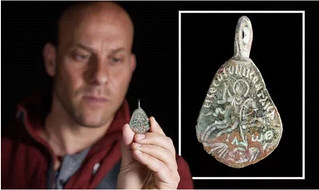 ISRAELI archaeologists have highlighted the discovery of a 1,500-year-old amulet believed to have once protected women and children from the "evil eye".
ISRAELI archaeologists have highlighted the discovery of a 1,500-year-old amulet believed to have once protected women and children from the "evil eye".
The ancient trinket was unearthed in northern Israel in the Biblical region of Galilee, near the Sea of Galilee. Tova Haviv, one of the first residents of the village of Arbel stumbled upon the necklace pendant some 40 years ago. A family member has now handed the artefact to the Israel Antiquities Authority, allowing experts to marvel at the discovery.
THE BOOK BAZARRE
WAYNE'S NUMISMATIC DIARY MAY 30, 2021
Tuesday, May 18th brought the dinner meeting of my Northern Virginia numismatic social group, Nummis Nova. It was the second in-person dinner we've had since the pandemic lockdowns. First up, Tom Kays provided these images and remarks. -Editor
Nummis Nova has resumed meeting in person. We dined at an old favorite, Southside 815, serving Southern Comfort Food in Alexandria, Virginia, on the third Tuesday in May. Nine hardy souls braved this mask-less
dining experience, tempted by the red beans and rice
on special that night, among other wonderful selections.
The left side of the table seems alarmed, not only that the right side of the table has been served first, but that the right siders
won't wait politely for everyone to be served before digging in.
Right siders
with eyes on the prize, ignore the lefties,
but do bring cutlery to hand, ready for action should butter dish conflict ensue. It has been a long time since we all dined together. Oh, Fugio!
Sorry about the time slip in the pictures. Truly it was wonderful to see each other and get out of the house.
A MEMORABLE CHAIN CENT PURCHASE
Dave Lange submitted this great backstory on a recent coin purchase. Thanks! -Editor
There's usually nothing of general interest to readers in any of my coin purchases, but I recently completed one that may break that rule. We all like coins having cool back stories, and this is about just such a piece.
For the past 20 years I've been rebuilding my USA coin type set that accompanies the class I co-instruct with Frank Van Valen at the ANA's Summer Seminar. My collecting activity has continued without interruption, despite the recent obstacle of the Covid-19 pandemic that precluded this event for the past two years. It's been a real challenge to either match or improve upon the type set I'd built previously during the 1970s-80s that I later sold when my numismatic passion swung to other countries for several years. I don't regret collecting world coins, but I did come to bemoan the sale of many United States coins that later proved hard to replace. Chief among these were my 1793 Chain and Wreath Cents, the values of which soared over the past two decades. These two have now been secured, with the Chain Cent providing a history that's worth relating here.
THE U.S. MINT AND THE MANHATTAN PROJECT
The MPC Gram is a newsletter for collectors of Military Payment Certificates and other military numismatica. The 29 May 2021 issue includes a fascinating short article by Bill Myers about the connection of the U.S. Mint to, believe it or not, the Manhattan Project. Republished with permission. Thank you! This is noted anywhere else in numismatic literature including The Numismatist, Coin World, various periodicals, and earlier E-Sylum articles. -Editor
MANHATTAN PROJECT
by Bill Myers
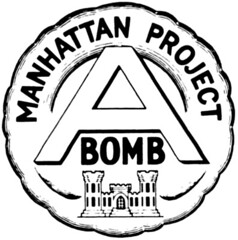 At the 2021 MPC E-FEST my presentation was about coins melted for war materiel during World War II. It was brought up that I did not include the fact that the United States as the US Mint provided silver for the Manhattan Project. The Manhattan Project needed enriched uranium for the atomic bomb. The United States built Plant Y-12 in Oak Ridge, TN. It used electromagnets to separate U-235 (weapons grade) from U-238. The coils of magnets are usually made of copper but copper was critical for the manufacture of war materiel so it was not available. Silver has an electroconductivity that is similar to copper. 14,700 tons of silver were borrowed from the US mint to make the coils.
At the 2021 MPC E-FEST my presentation was about coins melted for war materiel during World War II. It was brought up that I did not include the fact that the United States as the US Mint provided silver for the Manhattan Project. The Manhattan Project needed enriched uranium for the atomic bomb. The United States built Plant Y-12 in Oak Ridge, TN. It used electromagnets to separate U-235 (weapons grade) from U-238. The coils of magnets are usually made of copper but copper was critical for the manufacture of war materiel so it was not available. Silver has an electroconductivity that is similar to copper. 14,700 tons of silver were borrowed from the US mint to make the coils.
THE FAROUK 1933 DOUBLE EAGLE, PART 2
With permission, here's an excerpt from the very detailed history description of the Farouk 1933 Double Eagle up for auction in Sotheby's June New York sale. Thanks. -Editor
THE BRIEF LIFE AND DEATH OF AMERICA'S LAST GOLD COIN
The Factory on Spring Garden Street
As citizens lined up to return their gold at Federal reserve banks, the employees within the massive neoclassical edifice of the Philadelphia Mint saw little action. Both the Cashier's and Coining Departments' daily records reflect this torpor. In that beleaguered, depressed economy there was little need to make new money; the entire 1933 production at the Philadelphia Mint approximated a single day's output in 1928.
Each step of production and delivery was carefully choreographed and scrupulously recorded. On Thursday, March 2, the first 1933 Double Eagles were struck, but it was not until March 15, 1933 that the requisite number (25,000) passed quality control when the first delivery to the Cashier was made.
THE AUCTION OF A PURPLE HEART
Gerry Tebben writes:
"There were two stories in the Wall Street Journal this week that bear on the hobby: One, curiously about Bitcoin and banking before the Civil War and one about the the auction of a Purple Heart. The story is a moving Memorial Day piece on a Marine's effort to return a posthumously awarded Purple Heart to the family. I don't collect military medals, but always and wrongly thought it was illegal to sell them. Auctioneer Bill Panagopulos of Alexander Historical Auctions features prominently in the article, explaining the business of buying and selling historical artifacts. I won't spoil the story for you (It's well worth the read.) but the business part of it should be familiar to everyone in the hobby."
THE NATIONAL BRONZE PICTURE GALLERY
As noted in this week's Numismatic Diary, here is some more information on the National Bronze Picture Gallery from the Stacks Bowers June 2021 auction. -Editor
This series of substantial bronze portraits was conceived by William H. Miller, owner of William H. Miller & Sons Foundry, in Providence, Rhode Island. In 1864, as the Civil War raged, Miller commissioned Maine sculptor, Franklin B. Simmons to produce a series of bronze portrait reliefs featuring Abraham Lincoln, his cabinet, and significant Union generals. Simmons moved to Washington D.C. to work on the project, reportedly drawing from life all or most of the distinguished persons he would eventually fashion into bronze. Most accounts suggest the series was 24 portraits, though the Union League of Philadelphia website gives the number as 31. The complete series was finished in 1865, and was titled the National Bronze Picture Gallery. Again according to the Union League, the series of portraits was "exhibited in several northern cities including New York City, Chicago and Philadelphia, where the medallions were displayed at the 'Great Fair in Honor of the Soldiers and Sailors Home' held at the Academy of Music between October 23 and November 4, 1865." The two pieces offered here are from this impressive series, and make clear that Simmons' skill was substantial. As per the marks on these pieces, the castings themselves were almost certainly done at the Miller foundry.
THE CASHIER WHO TOOK GEORGE FLOYD'S $20 BILL
On the first anniversary of the event that thrust him into the news, The Guardian interviewed the cashier who took George Floyd's $20 bill. -Editor
 Christopher Martin lived above a bricked grocery store in south Minneapolis, with a maroon awning and bold red signage that reads Cup Foods. So when a cashier's position came up last year, he took it without thinking.
Christopher Martin lived above a bricked grocery store in south Minneapolis, with a maroon awning and bold red signage that reads Cup Foods. So when a cashier's position came up last year, he took it without thinking.
He quickly learned the regulars' orders by heart, their specific tobacco preferences, their favored snacks. The job was more than just a paycheck. A family, community base,
he remembered. A lot of jokes and laughs.
But on 25 May last year, he served a customer he had never met before, igniting a chain of events that rippled around the world and irreversibly changed Martin's life.
WALL STREET'S CRYPTO ARTIST
Money artist J.S.G. Boggs would certainly appreciate the work of "Wall Street's Crypto Artist" Sarah Meyohas. Here's an excerpt from Tuesday's Wall Street Journal. -Editor
 Sarah Meyohas's work at the intersection of art, technology and finance earned the contemporary artist fame with financiers and tech geeks. Her latest piece aims squarely at the crypto crowd.
Sarah Meyohas's work at the intersection of art, technology and finance earned the contemporary artist fame with financiers and tech geeks. Her latest piece aims squarely at the crypto crowd.
Long before Beeple's digital collage fetched tens of millions of dollars at auction, Ms. Meyohas was experimenting with using the blockchain technology behind bitcoin to make art. The result looked a lot like the so-called nonfungible tokens that have powered millions in art sales in recent months, along with NBA Top Shot and other digital collectibles. NFTs are similar to bitcoin: Each one is unique, allowing them to act like deeds proving ownership of digital assets.
Ms. Meyohas's work places her at the vanguard of this art-world revolution. She will be relaunching an early project, Bitchcoin, on the Ethereum network, with a public presale at Phillips auction house on May 25. Her 2015 project sold tokens entitling investors to portions of her photographic prints. The new Bitchcoins will be backed by flower petals from a previous work called Cloud of Petals.
STABLECOINS AND THE WILD WEST OF FINANCE
Gerry Tebben passed along this Wall Street Journal article about Bitcoin and banking before the Civil War. Thanks! Here's Gerry's comment. and an excerpt from the article. -Editor
Gerry writes:
"I don't understand cyber currencies. I don't even understand the possibility of understanding them. They seem more theology than economics to me. But there is something called a Stablecoin that tries to bridge the unfathomable gap between the etherial currencies and greenbacks. The article tries to explain it. I understand antebellum banking, but don't understand why anyone would want to go back to it."
THE BOOK BAZARRE
CAN I PAY THE TAXMAN IN COMMEMORATIVE COINS?
Dick Hanscom passed along this Daily Mail article about the quandary of spending "legal tender" commemorative coins. -Editor
Back in 2015, I bought some commemorative Winston Churchill £20 and Buckingham Palace £100 coins from the Royal Mint, thinking that they were legal tender so the value could only ever increase.
That might be technically true, but that's only as good as my ability to actually spend or deposit them.
I've tried depositing them at a couple of banks, but they've all refused. I've tried paying Vehicle Excise Duty with them at the Post Office, but they also refused payment.
CIRCULATING AND NON-CIRCULATING LEGAL TENDER
The topic of legal tender is also addressed in the May 2021 ANA Coin Press blog by Mitch Sanders - this time, of course, from the U.S. perspective. It's nicely done and well illustrated. Here's an excerpt, but see the complete article online. -Editor
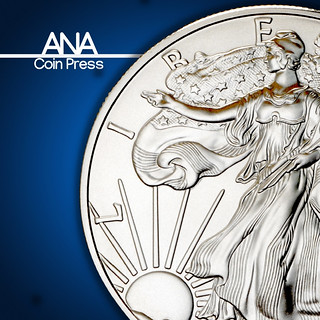 When it comes to legal tender, there are two, related paradoxes in numismatics.
When it comes to legal tender, there are two, related paradoxes in numismatics.
The first is that collecting a coin or banknote becomes possible only when it is removed from circulation, even though its legal tender status is a big part of what makes it collectible in the first place.
The second paradox is the inverse of the first: sometimes, collectible numismatic items are legal tender, but are not actually intended for circulation.
LOOSE CHANGE: MAY 30, 2021
Here are some additional items in the media this week that may be of interest. -Editor
An article by Ursula Kampmann on the Künker website discusses Sebastian Dadler's Medal Commemorating the Death of William II. -Editor
We do not know who commissioned the medalist Sebastian Dadler, who lived in Hamburg at the time, to create a medal that interpreted the death of William II as the fortunate intervention of a divine power. But we do know that there was a large Dutch community in Hamburg and that Hamburg had close trade ties with Amsterdam. Hamburg merchants, just like their Amsterdam counterparts, probably appreciated peace as the basis of their business and thus gladly acquired a medal that depicted their view on the matter.
In order to comment on the death of William II on a medal, Dadler drew on well-known myths from ancient times. Thus, the obverse alludes to the Trojan horse, which carried ruin to Ilion in its belly.
On the obverse we see a large horse in front of the city view of Amsterdam. The horse is decorated with a magnificent saddle blanket. It features a sealed treaty with the inscription UNIO (= union) and RELIGIO (= denomination / faith). The saddle blanket represents the official propaganda of William II. He invoked his office as Governor General of the United Provinces of the Netherlands and propagated Calvinism as the religion that had to be protected everywhere.
What Dadler and his clients thought of this is expressed by the word SIMULANT, which is Latin for they deceive, pretend
. This statement is illustrated by the soldiers hidden under the saddle blanket.
To read the complete article, see:
Politics, Religion and Divine Retribution: The Failed Ambitions of William II of Orange
(https://www.kuenker.de/en/information/presseinformationen/aktuelle-mitteilungen/363)
Other topics this week include the Banco Alemán Transátlantico. -Editor

